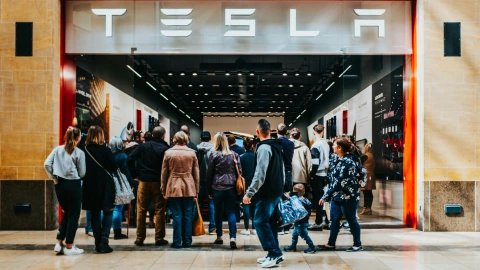Driving a Different Type of Vehicle
Switching from a gas-powered car to an electric vehicle (EV) can feel like a big leap. In reality, it is a smooth and rewarding transition for most drivers. EV ownership is not just about driving a different type of vehicle. It changes how you fuel your car, how you maintain it, and how you approach daily transportation.
If you are wondering what it feels like to live with an electric vehicle, this guide walks through the key differences, benefits, and adjustments that come with ownership.
Charging Becomes Routine
For most EV owners, charging becomes second nature. Instead of making weekly stops at the gas station, you simply plug in your vehicle at home, much like charging a smartphone.
- At home: A Level 2 charger can refill most EV batteries overnight.
- Out and about: Public chargers are available at grocery stores, restaurants, shopping centers, and rest areas. Many apps and built-in navigation tools help you find them easily.
Most EV drivers handle the majority of their charging at home. Public charging is primarily used for longer trips or when extra convenience is needed.
Maintenance Is Minimal
Electric vehicles have far fewer moving parts than traditional gas-powered cars. As a result, there are fewer things that can break or wear out.
Typical maintenance includes:
- Rotating tires
- Replacing cabin air filters
- Occasionally checking brake fluid or coolant
Regenerative braking also means your brake pads last significantly longer. Many EV owners are pleasantly surprised by how little maintenance is needed over time.
The Drive Is Smooth and Quiet
One of the first things drivers notice is how quiet and responsive an EV feels. There is no engine noise and no shifting of gears interrupting the ride.
Key benefits of driving an EV include:
- Instant torque for quick acceleration
- A calm, vibration-free experience
- Improved handling thanks to the battery’s low placement in the vehicle
If you appreciate comfort and performance, the EV driving experience is a major advantage.

New Habits Are Easy to Learn
The biggest change in owning an EV is learning to think about range. Most modern EVs have more than enough range for daily use but longer trips benefit from a bit of planning.
As you get used to driving electric, new habits begin to form:
- You start checking your range the same way you once checked your fuel gauge.
- You begin to learn how far your EV can go under different conditions.
- You use apps or your vehicle’s navigation to plan charging stops when necessary.
After just a few weeks, most drivers find that charging and planning becomes completely natural.
You Can Save Money
Although EVs may have a higher upfront price, they often offer a lower total cost of ownership thanks to savings on fuel, maintenance, and incentives.
Here are some of the most common ways EV owners save:
- Fuel: Charging with electricity is often much cheaper than buying gasoline, especially if you charge at home.
- Maintenance: With fewer parts and no oil changes, regular upkeep costs less.
- Incentives: State and utility-based rebates can make EVs more affordable to buy and operate.
These savings can add up quickly and make a real difference over time.
Public Charging Keeps Improving
Fast-charging stations are becoming more common on highways and in urban areas. Many offer charging while you dine, shop, or take a break.
Most EVs now include route-planning tools that display charging stops and estimated wait times. These systems simplify travel and give drivers confidence on longer trips.
Technology is also improving. Newer EV models feature faster charging speeds and extended ranges, which makes ownership even more convenient.
What Real Owners Say
Most people who switch to an EV say they would not return to driving a gas-powered car. The convenience, comfort, and cost savings create a positive ownership experience.
Here are some of the most common comments from EV owners:
- “It’s easier than I thought.”
- “I don’t miss stopping at gas stations.”
- “It’s more fun to drive and better for the environment.”
Final Thoughts
Owning an EV is more than a vehicle change. It represents a shift in your habits, priorities, attitude, and overall lifestyle. With convenient home charging, lower maintenance needs, and a smooth driving experience, electric vehicles are a smart choice for many drivers.
As public charging infrastructure expands and technology improves, now is an excellent time to consider making the switch.
Don’t Stop Now, Learn Even More
Understand the true costs and maintenance needs of EV ownership:
← Go Back: EV Glossary: Electric Vehicle Terms Explained
Discover Next: EV Ownership Costs and Maintenance →
















